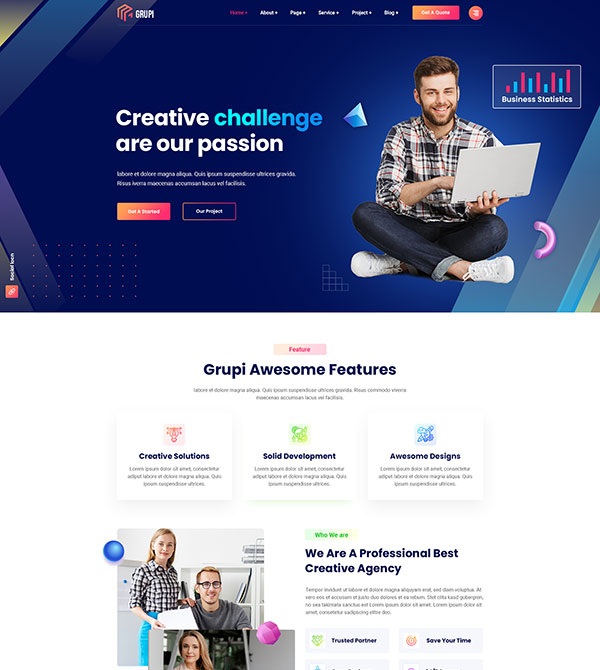Building upon the foundational understanding that visual cues significantly enhance learning and engagement, it becomes essential to delve into how these cues can transcend mere cognitive triggers and foster genuine emotional connections. As explored in How Visual Cues Enhance Learning and Engagement, visual stimuli are powerful tools for capturing attention and aiding comprehension. Now, we turn our focus to the next critical dimension: emotional engagement. This deeper layer not only sustains interest but also creates meaningful, lasting bonds between learners and content.
Table of Contents
- The Psychology of Emotional Response to Visual Stimuli
- Designing Visual Cues to Trigger Emotional Engagement
- Non-Verbal Communication: Visual Cues as Emotional Language
- Emotional Engagement and Memory Retention: The Link
- Personalization and Emotional Connection
- Overcoming Barriers: When Visual Cues Fail to Engage Emotionally
- From Emotional Engagement to Deeper Learning: A Feedback Loop
- Bridging Back to Cognitive Engagement: Integrating Emotional and Learning Strategies
The Psychology of Emotional Response to Visual Stimuli
Visual cues are inherently powerful because they tap into the subconscious emotional responses built into our neuropsychological makeup. Research in cognitive neuroscience shows that emotionally charged visual stimuli activate the amygdala, a brain region crucial for processing emotions such as fear, joy, and empathy. For example, a vivid image of a smiling child or a compassionate gesture can evoke feelings of warmth and trust without the need for verbal explanation. These responses occur rapidly and automatically, often bypassing conscious filtering, which makes visual cues especially effective in establishing initial emotional bonds.
Furthermore, emotional reactions to visual stimuli are processed differently than purely cognitive attention. While cognitive attention is analytical and deliberate, emotional attention is visceral and immediate. This distinction explains why emotional visual cues often leave a stronger imprint on memory and motivation, reinforcing the importance of designing visuals that resonate on a personal level.
Designing Visual Cues to Trigger Emotional Engagement
Color Psychology and Emotional Resonance
Colors evoke specific emotional responses that can be strategically employed in visual design. For instance, red often signifies urgency, passion, or excitement, making it suitable for calls to action or highlighting critical information. Conversely, blue conveys calmness, trust, and stability, ideal for building confidence in educational content. Green can evoke feelings of growth and harmony, fostering a sense of reassurance and engagement. Incorporating these color principles enhances the emotional impact of visuals, making them more memorable and motivating.
Symbols and Imagery That Evoke Empathy and Motivation
Using culturally resonant symbols and relatable imagery can trigger empathy and motivation. For example, images of diverse learners collaborating can promote inclusivity and belonging, which are powerful emotional drivers in educational contexts. Symbols like hearts or thumbs-up icons can quickly communicate approval or encouragement, fostering positive emotional responses. It’s crucial, however, to consider cultural variations in symbolism to avoid misinterpretation and ensure broad emotional appeal.
The Importance of Cultural and Contextual Sensitivity
Cultural nuances influence how visual cues are perceived emotionally. An image or color that evokes positive feelings in one culture might be neutral or even negative in another. For instance, white symbolizes purity in Western cultures but may be associated with mourning in some Asian societies. Therefore, designing emotionally engaging visuals requires a nuanced understanding of the target audience’s cultural background, ensuring that visual cues foster genuine emotional connections without unintended offense.
Non-Verbal Communication: Visual Cues as Emotional Language
Facial expressions, gestures, and body language serve as universal forms of non-verbal communication that can convey complex emotional states. In visual design, these elements can be incorporated into imagery or icons to subtly communicate trust, safety, or encouragement. For example, a friendly face with a genuine smile can immediately create a sense of approachability and warmth, establishing a safe learning environment. Gestures like open hands or thumbs-up are recognized globally as signs of positivity and support.
Case studies have demonstrated that integrating human expressions into educational visuals significantly increases engagement and emotional connection. For instance, educational videos featuring relatable characters expressing empathy or enthusiasm often see higher retention and motivation levels among learners.
Emotional Engagement and Memory Retention: The Link
Emotional arousal plays a crucial role in memory encoding processes. When learners experience positive or compelling emotions in response to visual cues, these stimuli are more likely to be encoded deeply, resulting in stronger recall. For example, storytelling visuals that evoke curiosity or empathy can serve as emotional hooks, anchoring information more effectively in long-term memory.
Practical applications include using vivid imagery in educational materials to create emotional associations. A history lesson that employs emotionally charged photographs or narratives about real individuals often results in better retention compared to purely factual presentations. This indicates that leveraging emotional engagement is not just about improving motivation but also about enhancing learning outcomes.
Personalization and Emotional Connection
Adapting visual cues to individual emotional profiles can significantly deepen engagement. Personalization strategies include using visual storytelling techniques that reflect learners’ interests, backgrounds, and goals. For example, incorporating culturally relevant imagery or narratives can foster a sense of personal relevance, making the learning experience more meaningful.
Technological advancements enable dynamic customization of visuals. Adaptive learning platforms can analyze user interactions and preferences, then present tailored visual cues that resonate emotionally. Such personalization fosters stronger bonds, motivation, and sustained engagement, ultimately leading to more effective learning.
Overcoming Barriers: When Visual Cues Fail to Engage Emotionally
Not all visual cues evoke the intended emotional response. Cultural differences, personal experiences, and social contexts can create disconnects. For instance, a symbol or color that is positive in one context might be neutral or negative in another. Recognizing these potential barriers is essential for effective design.
Strategies to refine visual cues include conducting audience research, testing visuals with diverse groups, and seeking feedback. Employing flexible design principles that allow for cultural adjustments can broaden emotional appeal. Ethical considerations must also guide visual design, ensuring that cues do not manipulate or exploit learners’ emotions unnecessarily.
From Emotional Engagement to Deeper Learning: A Feedback Loop
Emotional engagement creates a positive feedback loop that enhances motivation and curiosity. When learners feel emotionally connected, they are more likely to explore content further, ask questions, and retain information longer. Visual cues that evoke emotions—such as inspiring stories or relatable characters—serve as powerful tools to reinforce learning.
Measuring emotional impact involves analyzing behavioral indicators, self-reported feelings, and physiological responses. Data-driven insights enable educators and designers to refine visual strategies, maximizing their emotional and educational effectiveness.
Bridging Back to Cognitive Engagement: Integrating Emotional and Learning Strategies
The most effective educational visuals integrate both emotional and cognitive elements, creating a balanced approach that appeals to learners on multiple levels. Emotional cues motivate and foster trust, while cognitive cues support understanding and critical thinking. For example, infographics can combine vibrant colors and expressive icons with clear data representations, engaging learners emotionally and intellectually simultaneously.
Practical strategies include layering visuals—starting with emotionally engaging imagery to capture attention, then providing detailed information to satisfy cognitive needs. This synergy enhances retention, motivation, and overall engagement, leading to deeper, more meaningful learning experiences.
“The true power of visual cues lies in their ability to connect with learners emotionally, making education not just informative but transformative.”
Ultimately, developing a nuanced understanding of how visual cues evoke and harness emotional responses allows educators and designers to craft more compelling, effective learning environments. By thoughtfully integrating emotional engagement strategies, we build stronger bonds that motivate learners, deepen understanding, and foster lifelong curiosity.









